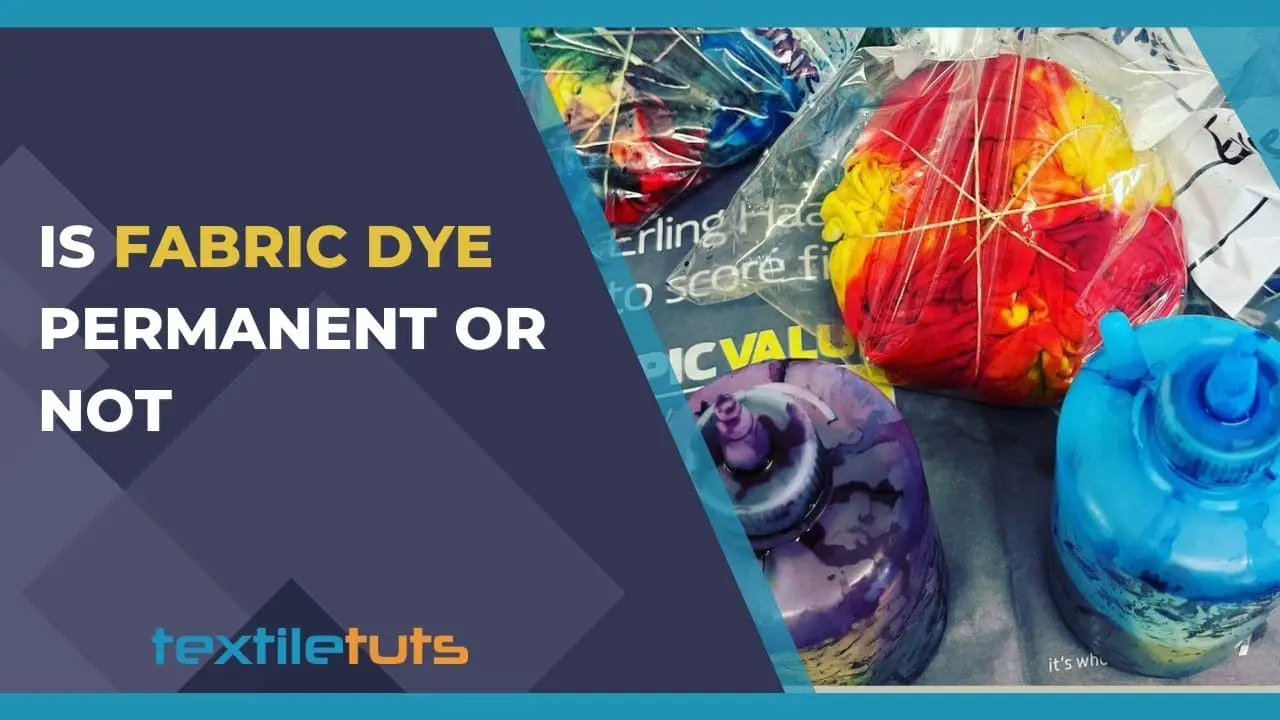Is Fabric Dye Permanent or Not?
Dyeing your clothes with a particular color could mean you want them to match certain items in your wardrobe, like a new dress for an upcoming wedding; or you might simply enjoy wearing bright colors all year long!
And yes, we all make mistakes and that doesn’t mean we should throw away our favorite clothes right away. A mistake in the color mixing recipe or the use of excessive fixing chemicals might result in a completely different hue than intended.
But don’t panic! You just have to know- is fabric dye permanent or not; and even if it’s permanent, there’s still hope.
Let’s begin.
Is Fabric Dye Permanent?

Most of the fabric dyes that are available in the market are permanent. And the degree of their permanency depends on several factors. These include –
- Type of dye,
- Dye-fiber bond mechanism,
- Amount of fixing agent,
- Dyeing runtime, etc.
Now, let’s explain it further. Suppose you have decided to dye your polyester microfiber t shirt with reactive dyes. Since reactive dyes, by nature, don’t have any affinity towards polyester fiber, the result won’t permanent. Meaning, the dyes will wash away the moment you put it in the washer.
On the other hand, if you dyed your cotton shirt with fiber reactive dyes and used a fixative like soda ash with it; then this time around, the bond is permanent.
Let’s assume you have done everything correctly except the color mixing part. Thus, you want to remove or lighten the shade. What should you do?
How to Remove Permanent Fabric Dyes?
The process of removing the permanent fabric dyes varies depending on the type of dye and the type of fabric. Also, the degree of dye removal isn’t the same for all the processes.
We recommend using the commercially available fabric dye removers to remove color from your clothes.
The following processes are mostly used in dyeing facilities. And it would be hard for you to get ahold of these chemicals.
Removing Cotton Dyes from the Fabric
Cotton is mostly dyed with fiber reactive dyes. You can opt for the partial or full stripping process. However, none of them can fully remove the cotton dyes.
For partial removal use glacial acetic acid of 5-10 parts with 1000 parts of water. Then, raise the temperature to 100 degrees celsius.
For full stripping, you must use a reducing agent. Sodium Hydrosulfite or Rongalite can be used at boil with an alkali like soda ash or sodium hydroxide. After the stripping, you can now bleach it with any bleaching agent that is available to you.
Finally, you have to neutralize the cloth using an acid solution.
Note: The full stripping process will degrade your fabric’s strength.
Removing Polyester Dyes from the Fabric
Polyester fabrics are mostly dyed with disperse dyes. Polyester fabric dyes are hard to remove as well. You’ll have to use an appropriate dispersing agent, reducing agent at a temperature of 135 degrees celsius.
Removing Wool Dyes from the Fabric
Acid dyes are mostly used to dye wool and nylon fabrics. To remove them, you’ll need to use hot water, enzyme, or hydrogen peroxide. Generally, boiling wool in the same dyebath results in dye loss. Using a salt solution at boil will help also.
Removing Silk Dyes from the Fabric
Silk fabrics are also mostly dyed with acid dyes. So, make sure to use an alkali before using hydrogen peroxide. Other processes include heat setting, enzyme treatment at 85 degrees celsius, and dry cleaning under pressure.
Removing Rayon Dyes from the Fabric
Rayons are mostly dyed with disperse dyes. Use a reducing agent like Sodium hydrosulfite to remove it.
You can use carbona color run remover to remove all types of permanent dyes by following our linked guide.
Final Words
So, there’s everything you need to know about is fabric dye permanent or not? And if it’s permanent, how will you remove it? Before re-dyeing, neutralizing your clothes is always a good idea.
REFERENCES

